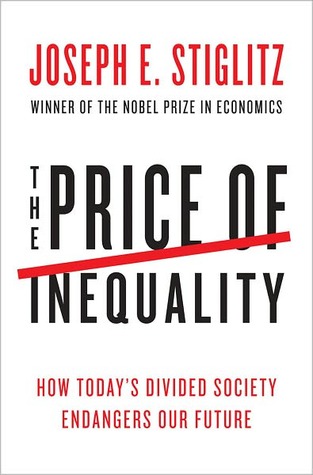More on this book
Community
Kindle Notes & Highlights
Read between
July 28 - September 8, 2017
But the politicians of the era were also beneficiaries of the bubble. This irrational investment demand during the tech boom helped to offset the otherwise weak demand created by the high inequality, making the Bill Clinton era one
of seeming prosperity. Tax revenues from capital gains and other income generated by the bubble even gave the appearance of fiscal soundness. And, to some extent, the administration could claim “credit” for what was going on: Clinton’s policies of financial market deregulation and cuts to capital gains tax rates (increasing the returns to speculating on the tech stocks) added fuel to the fire.6
We have seen how inequality gives rise to instability, as a result of both the deregulatory policies that are enacted and the policies that are typically adopted in response to the deficiencies in aggregate demand. Neither is a necessary consequence of inequality: if our democracy worked better, it might have resisted the political demand for deregulation and might have responded to the weaknesses in aggregate demand in ways that enhanced sustainable growth rather than creating a bubble.14 There are further adverse effects of this instability: it increases risk. Firms are risk averse, which
...more
In the wake of the 2008 global financial crisis, there is now an increasing global consensus that inequality leads to instability, and that instability contributes to inequality.
The current economic mantra stresses the role of the private sector as the engine of economic growth. It’s easy to see why: when we think of innovation we think of Apple, Facebook, Google, and a host of other companies that have changed our lives. But behind the scenes lies the public sector: the success of these firms, and indeed the viability of our entire economy, depends heavily on a well-performing public sector. There are creative entrepreneurs all over the world. What makes a difference—whether they are able to bring their ideas to fruition and products to market—is the government.
The cuts come despite evidence that the boost these investments give to the economy far exceeds the average return in the private sector, and is certainly higher than the cost of funds to the government.21
While the most immediate symptom is disillusionment leading to a lack of participation in the political process, there is always a worry that voters will be attracted to populists and extremists who attack the establishment that has created this unfair system21 and who make unrealistic promises of change.
The decision allows corporations and unions to exercise “free speech” in supporting candidates and causes in elections to the same degree as individual human beings. Since corporations have many millions of times the resources of the vast majority of individual Americans, the decision has the potential to create a class of super-wealthy political campaigners with a one-dimensional political interest: enhancing their profits.
Information that is consistent is remembered, seen as relevant,
and reinforces beliefs. Information that is inconsistent is more likely to be ignored, discounted, or forgotten. This distortion is called “confirmatory bias.”14
Today, of course, the first trader knows the game he’s playing, so he would never place a large order, but would place a myriad of small orders. There’s been an arms race, where those doing the hard work of research try to keep their information away from the algorithmic traders, and the algorithmic traders try to break their code. One might say it’s just a waste of resources—a fight over the rents associated with early information. But it’s worse than that. To the extent that the algorithmic traders succeed in outwitting those who do the real research, the returns to research fall; there will
...more
Nor is this the only example. Private health insurance companies are much less efficient than the government-run Medicare program.58 Private life insurance companies are much less efficient than the government’s Social Security program.59 To take another example: a recent study showed that, on average, contractors “charged the federal government more than twice the amount it pays federal workers” for performing comparable services.60 As much as one out of four dollars spent on contracting in Iraq and Afghanistan was wasted or misspent, according to the Commission on Wartime Contracting in Iraq
and Afghanistan.61 In an earlier study, Linda Bilmes and I showed how the government could have saved billions by having the armed forces provide these services.62 But this—and other experiences—suggests that it was not just ideology that drove the contracting/privatization agenda: it was rent seeking.
In short, if we were serious about deficit reduction, we could easily raise trillions of dollars over the next ten years simply by (a) raising taxes on people in the top—because they get so much of the nation’s economic pie, even small increases in tax rates raises substantial revenues; (b) eliminating loopholes and special treatment of the kind of income earned disproportionately by the top—from lower tax rates for speculators and dividends to exemption of municipal interest; (c) eliminating the loopholes and special provisions of the individual and corporate tax system that subsidize
...more
the economy; and (g) making those who get to use or exploit our nation’s resources—resources that rightfully belong to all Americans—pay full value.
There is another strategy that can stimulate the economy, even if there is an insistence that the deficit now not increase; it is based on a long-standing principle called the balanced-budget multiplier. If the government simultaneously increases taxes and increases expenditure—so that the current deficit remains unchanged—the economy is stimulated. Of course, the taxes by themselves dampen the economy, but the expenditures stimulate it. The analysis shows unambiguously that the stimulative effect is considerably greater than the contractionary effect. If the tax and expenditure increases are
...more
growth that is brought about.


